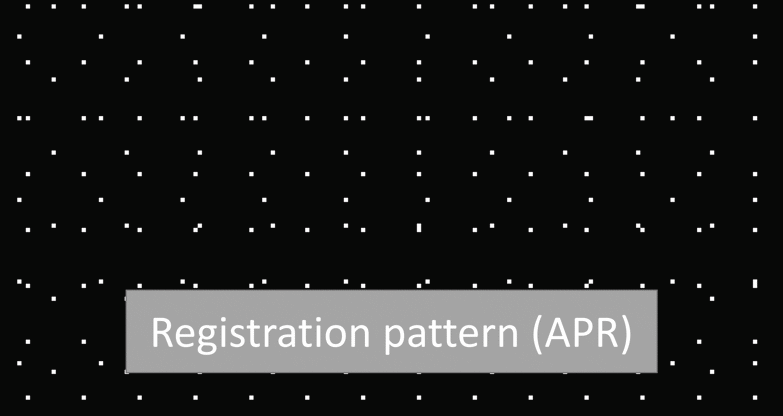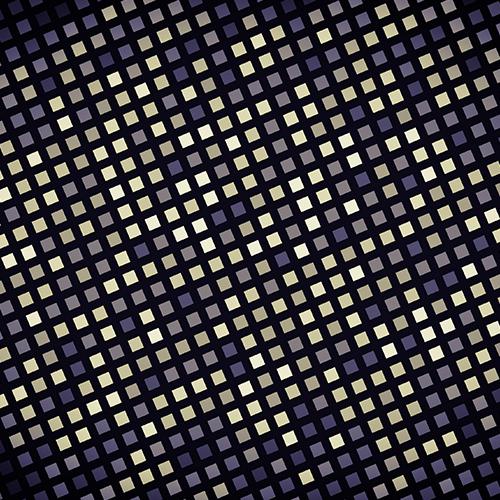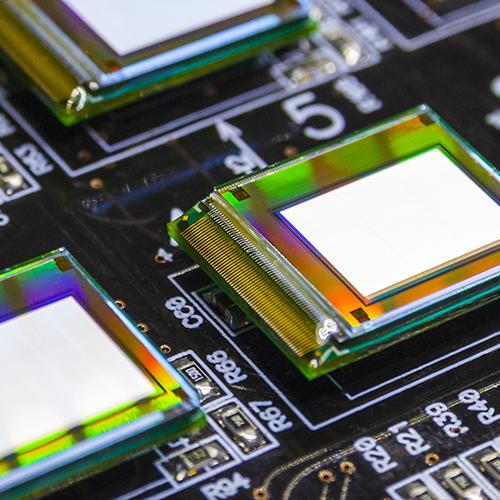The aim of DeMURA is to correct the production-based pixel to pixel luminance and chromaticity variation.
LMK DeMURA - High-Precision Display Nonuniformity Correction & Pixel Registration
Modern single-pixel emitter displays such as OLED, microLED, and LED often suffer from production-related variations. The luminance and chromaticity can vary locally from pixel to pixel, resulting in a high-frequency non-uniformity and globally leading to a low-frequency non-uniformity. These variations degrade visual quality and consistency, making precise correction essential in both R&D and production.
Advanced Pixel Registration for Accurate Mapping
LMK DeMURA uses Advanced Pixel Registration (APR) to assign measured luminance values to the correct pixel index. Unlike conventional methods that switch off neighboring pixels and require multiple captures, APR uses a dense geometric registration pattern (point cloud) that inherently accounts for display and lens imperfections.
APR allows for:
- Only one image capture per gray level / color channel
- Faster measurement cycles and higher throughput
- Reduced overhead in test setups
Single Shot Pixel Registration (SPR) for Production Speed
Under appropriate conditions, SPR (Single Shot Pixel Registration) enables one-time registration followed by fast mapping across multiple devices. SPR is suited for production lines where per-unit cycle time must be minimal.
Supported Display Technologies & Use Cases
LMK DeMURA is applicable to:
- OLED, microLED, and LED panels
- Slightly curved, freeform, and flat display surfaces
- Research labs and pilot production lines
- MicroDisplays
Integration & Workflow in Lab and Production
The DeMURA module is available as standalone software. It can operate in GUI mode (for lab use) or TCP/IP mode (for integration into production systems). It seamlessly fits into the LMK LabSoft environment, coordinating with other measurement modules (uniformity, luminance, spectral measurement).
Advantages of LMK DeMURA
- Pixel-accurate correction for luminance and chromaticity nonuniformities
- Faster workflows: reduced capture count per measurement
- Effective Moiré suppression via phase compensation
- High throughput solutions for mass production lines
- Reliability: APR ensures robust mapping under real-world conditions
- Seamless integration with LMK cameras, optics, and software modules
- Scalable from laboratory use to automated production testing
RELEVANT PRODUCTS AND APPLICATIONS
Publications
International Conference on Display Technology (ICDT 2024)
International Conference on Display Technology (ICDT 2023)
International Meeting on Information Display (IMID 2022)
To ensure a correct pixel registration (assigning the luminance to the correct pixel) in state of the art methods, display pixels are partially switched off [Patent US9135851B2]. However, this reduces cycle time and changes the average pixel level, which can affect the results.
We present a method to overcome these issues, called Advanced Pixel Registration (APR). It is based on a specific registration pattern applied during a teach-in process. An example pattern is provided in Figure 1 (left). After this initial registration, DeMURA measurements can be performed with only one image capture per input signal. The same is true for following displays during EOL testing, as small misalignments, which occur in production control environments as slight shifts, inclinations or rotations of the DUT (see Figure 2) can be corrected automatically.
This contribution validates the APR method using a flat and free-form curved display with methods similar to [] Feng, X. (2019), 78-2: Measurement and Evaluation of Subpixel Brightness for Demura. SID Symposium Digest of Technical Papers, 50: 1122-1125.]. The results show that the APR method can significantly improve the efficiency of DeMURA processes required for high-quality LED, OLED and MicroLED displays, regardless of their shape.
Society for Information Display 2022
International Conference on Display Technology (ICDT 2021)
- Type:
- Software
- Applications:
- Display
- Measurands:
- Color measurement Light measurement
- Tasks:
- Automation & Industry Development & Industry Science & Research



